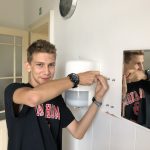This week at the ESSL Testbed we proudly present the following talks after the 9 UTC severe weather briefings:
Tue, 3 July 2018
Presentation by Kathrin Wapler: DWD Nowcast- and warning products
Wed, 4 July 2018
Presentation by Tomáš Púčik: Large hail forecasting
Thu, 5 July 2018
Presentation by Abdullah Kahraman: Hail and tornado environments in Turkey
Everyone interested can join online via the BlueJeans smartphone app or on your computer via https://bluejeans.com/720241930
Follow us, and don’t be shy, you can ask questions also online!









